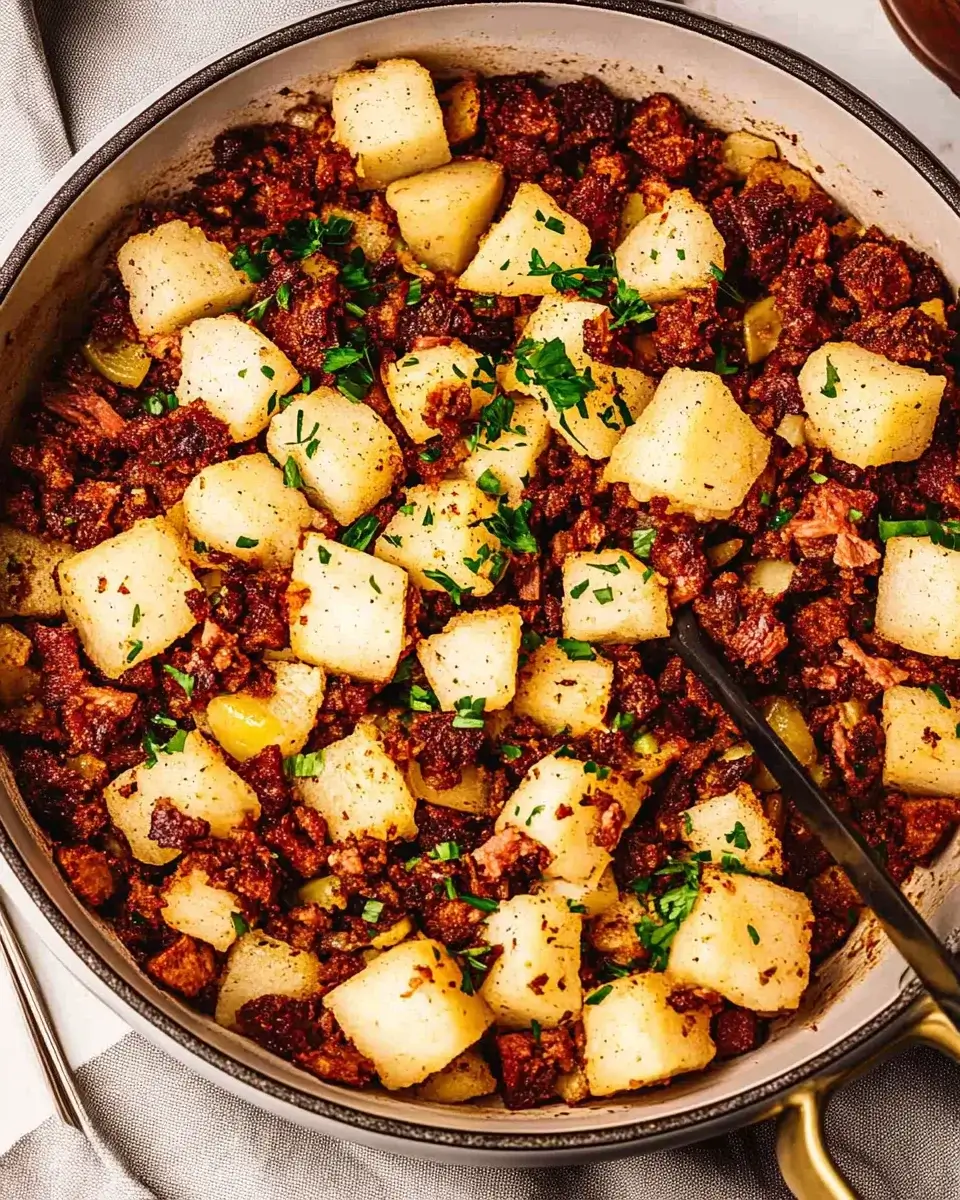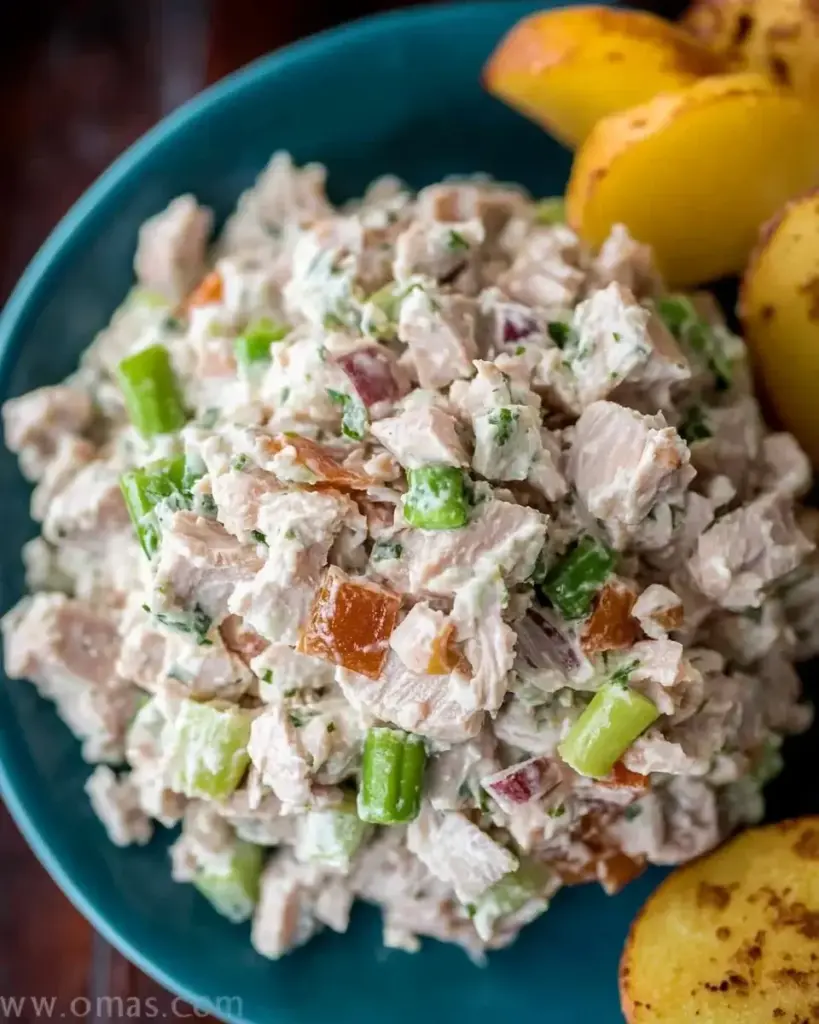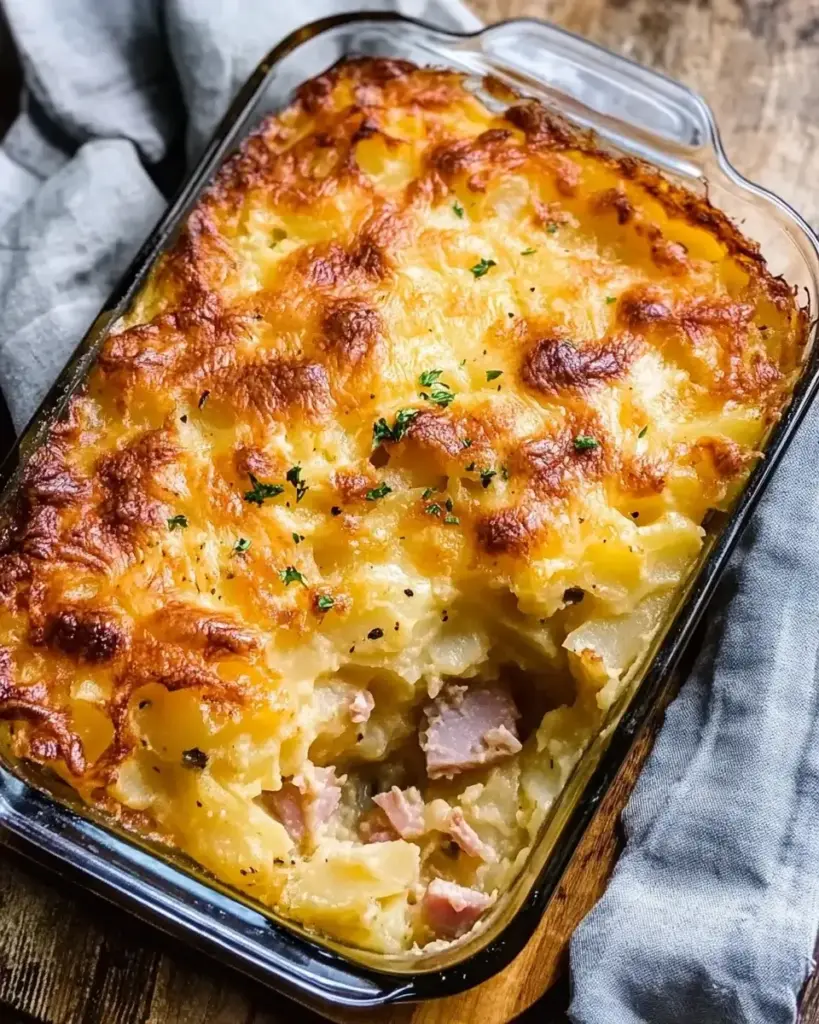When it comes to comfort food, few dishes can compete with the deliciousness of baked BBQ chicken. This recipe is not just about flavor; it’s about creating memories around the dinner table. The aroma of chicken baking in the oven, combined with the sweet and tangy scent of barbecue sauce, fills the home with warmth and anticipation. Whether it’s a casual weeknight dinner or a special family gathering, baked BBQ chicken is sure to please everyone.
Why Baked BBQ Chicken is a Family Favorite
Baked BBQ chicken is a family favorite for many reasons. First, it’s incredibly easy to prepare. With just a few simple ingredients, you can create a mouthwatering meal that requires minimal effort. This makes it perfect for busy parents or anyone looking to whip up a quick dinner.
Moreover, the versatility of this dish is unmatched. You can customize the flavors to suit your family’s preferences. Whether you like it sweet, spicy, or smoky, there’s a barbecue sauce out there for everyone. Plus, the chicken thighs remain juicy and tender, ensuring that every bite is packed with flavor.
Another reason baked BBQ chicken shines is its ability to bring people together. Sharing a meal is a time-honored tradition, and this dish encourages conversation and laughter. It’s a great way to bond with loved ones, making it a staple in many households.
In summary, baked BBQ chicken is not just a meal; it’s an experience. Its ease of preparation, flavor versatility, and ability to foster connection make it a beloved choice for families everywhere. So, let’s dive into the ingredients and get started on this delightful recipe!
Ingredients for Baked BBQ Chicken Recipe
To create the perfect baked BBQ chicken, you’ll need a handful of simple ingredients. Each one plays a vital role in delivering that mouthwatering flavor we all love. Here’s what you’ll need:
- 2 pounds bone-in, skin-on chicken thighs: These are the stars of the dish. The skin helps keep the meat juicy while baking.
- 1 cup barbecue sauce: Choose your favorite brand! This sauce adds sweetness and tanginess to the chicken.
- 1 tablespoon olive oil: This helps the spices stick to the chicken and adds a bit of richness.
- 1 teaspoon garlic powder: Garlic powder gives a wonderful depth of flavor.
- 1 teaspoon onion powder: This adds a subtle sweetness and enhances the overall taste.
- 1 teaspoon smoked paprika: For that smoky flavor that makes BBQ chicken irresistible.
- 1/2 teaspoon salt: Essential for bringing out the flavors in the chicken.
- 1/2 teaspoon black pepper: Adds a little kick to the dish.
- 1 tablespoon apple cider vinegar: This adds a tangy finish that balances the sweetness of the barbecue sauce.
With these ingredients on hand, you’re well on your way to making a delicious baked BBQ chicken that your family will love. Remember, the quality of your ingredients can make a big difference, so choose fresh and flavorful options whenever possible. Now that you have everything ready, let’s move on to the preparation steps!
Step-by-Step Preparation of Baked BBQ Chicken Recipe
Now that you have your ingredients ready, it’s time to dive into the step-by-step preparation of your baked BBQ chicken. Following these simple steps will ensure that your chicken turns out juicy, flavorful, and perfectly cooked. Let’s get started!
Step 1: Prepping the Chicken
First, you need to prepare the chicken thighs. Start by rinsing them under cold water. This helps remove any residual blood or impurities. After rinsing, pat the chicken dry with paper towels. This step is crucial because it helps the skin get crispy during baking. Once dried, place the chicken thighs in a large bowl, ready for marinating.
Step 2: Marinating the Chicken
Next, it’s time to marinate the chicken. In a separate bowl, combine the olive oil, garlic powder, onion powder, smoked paprika, salt, and black pepper. Mix these ingredients well to create a flavorful marinade. Now, pour this marinade over the chicken thighs, ensuring each piece is coated evenly. Let the chicken sit for about 15 minutes. This allows the flavors to penetrate the meat, making it even tastier.
Step 3: Preparing the BBQ Sauce
While the chicken is marinating, you can prepare the barbecue sauce. If you’re using store-bought sauce, simply set it aside. However, if you want to make your own, combine your favorite ingredients in a bowl. You can add a splash of apple cider vinegar for extra tang or even a teaspoon of liquid smoke for a deeper flavor. Mix well and taste to adjust the sweetness or spiciness to your liking.
Step 4: Baking the Chicken
Now, it’s time to bake the chicken! Preheat your oven to 400°F. Line a baking sheet with parchment paper for easy cleanup. Place the marinated chicken thighs on the baking sheet, skin side up. Brush a generous amount of barbecue sauce over each piece. Make sure to reserve some sauce for later. Bake the chicken in the preheated oven for 35-40 minutes. You’ll know it’s done when the internal temperature reaches 165°F and the skin is crispy and golden brown.
Step 5: Finishing Touches
As the chicken nears the end of its baking time, brush on an additional layer of barbecue sauce for that extra burst of flavor. This step is optional but highly recommended! Once the chicken is done, remove it from the oven and let it rest for about 5 minutes. This resting period allows the juices to redistribute, ensuring each bite is juicy and tender. If you like, drizzle a bit of apple cider vinegar over the chicken for a tangy kick before serving.
And there you have it! Your baked BBQ chicken is ready to be enjoyed. The combination of flavors and the crispy skin will surely impress your family and friends. Now, let’s explore some delicious variations of this recipe!
Variations of Baked BBQ Chicken Recipe
While the classic baked BBQ chicken recipe is a hit on its own, there are many ways to switch things up! Exploring different sauces and cooking methods can add exciting flavors and textures to your dish. Let’s dive into some tasty variations that you can try!
Different Sauces to Try
Barbecue sauce is the star of this dish, but you can experiment with various sauces to create unique flavors. Here are a few ideas:
- Honey Mustard Sauce: Mix equal parts honey and mustard for a sweet and tangy twist. Brush it on the chicken before baking for a delightful flavor.
- Teriyaki Sauce: For an Asian-inspired flair, use teriyaki sauce. It adds a sweet and savory taste that pairs wonderfully with chicken.
- Buffalo Sauce: If you love heat, try buffalo sauce! It gives the chicken a spicy kick. You can mix it with some melted butter for a richer flavor.
- Peach BBQ Sauce: For a fruity twist, use peach barbecue sauce. The sweetness of peaches complements the savory chicken beautifully.
Feel free to mix and match these sauces or even create your own signature blend. The possibilities are endless!
Alternative Cooking Methods
While baking is a fantastic way to prepare BBQ chicken, there are other cooking methods that can yield delicious results. Here are a couple of alternatives:
- Grilling: For a smoky flavor, grill the marinated chicken thighs instead of baking them. Preheat your grill to medium heat and cook the chicken for about 6-8 minutes per side, brushing with barbecue sauce as you go.
- Slow Cooking: If you prefer a hands-off approach, use a slow cooker. Place the marinated chicken in the slow cooker, add your favorite barbecue sauce, and cook on low for 6-8 hours. The chicken will be incredibly tender and flavorful.
These alternative cooking methods can add a new dimension to your baked BBQ chicken recipe. Whether you choose to grill or slow cook, you’ll still enjoy that delicious flavor that makes this dish a family favorite!
Cooking Note for Baked BBQ Chicken Recipe
Cooking baked BBQ chicken is a delightful experience, but there are a few important notes to keep in mind to ensure your dish turns out perfectly every time. These tips will help you achieve juicy, flavorful chicken with crispy skin that your family will love.
First, always check the quality of your chicken. Fresh, high-quality chicken thighs will yield the best results. Look for thighs that are plump and have a nice layer of fat under the skin. This fat is essential for keeping the meat moist during cooking.
Next, marinating is key! Allowing the chicken to marinate for at least 15 minutes is crucial for flavor absorption. However, if you have more time, consider marinating it for a few hours or even overnight in the refrigerator. This extra time will enhance the flavors even more.
When it comes to baking, using a meat thermometer is highly recommended. This tool ensures that your chicken reaches the safe internal temperature of 165°F. It also helps prevent overcooking, which can lead to dry chicken. Insert the thermometer into the thickest part of the thigh, avoiding the bone for an accurate reading.
Lastly, let the chicken rest after baking. This step is often overlooked but is vital for juicy chicken. Resting allows the juices to redistribute throughout the meat, making each bite tender and flavorful. Cover the chicken loosely with foil while it rests to keep it warm.
By following these cooking notes, you’ll be well on your way to mastering the art of baked BBQ chicken. Enjoy the process, and don’t hesitate to experiment with flavors and techniques to make this dish your own!
Serving Suggestions for Baked BBQ Chicken Recipe
Once your baked BBQ chicken is ready, it’s time to think about how to serve it. The right side dishes and presentation can elevate your meal, making it even more enjoyable for your family and guests. Let’s explore some delicious side dishes that pair well with this flavorful chicken, along with some presentation tips to make your meal look as good as it tastes!
Side Dishes that Pair Well
Choosing the right side dishes can enhance the overall dining experience. Here are some tasty options that complement baked BBQ chicken:
- Coleslaw: A classic pairing! The crunchiness and tanginess of coleslaw balance the rich flavors of the chicken.
- Corn on the Cob: Sweet corn is a summer favorite. Grilled or boiled, it adds a delightful sweetness to your plate.
- Baked Beans: The smoky flavor of baked beans pairs perfectly with BBQ chicken. They add a hearty touch to your meal.
- Potato Salad: Creamy potato salad is a great side. It’s cool and refreshing, making it a perfect match for warm chicken.
- Garlic Bread: For a bit of indulgence, serve garlic bread. It’s great for soaking up any extra barbecue sauce!
Feel free to mix and match these sides based on your family’s preferences. Each option brings its own unique flavor, making your meal even more enjoyable.
Presentation Tips
Presentation is key when serving baked BBQ chicken. A well-presented dish can make a simple meal feel special. Here are some tips to enhance your presentation:
- Use a Colorful Plate: Choose a vibrant plate to make the colors of the chicken and sides pop. A white plate can also work well, providing a clean backdrop.
- Garnish with Fresh Herbs: Sprinkle some chopped parsley or cilantro over the chicken for a fresh touch. It adds color and a hint of flavor.
- Arrange Neatly: Place the chicken thighs in a neat row, and arrange the sides around them. This creates an inviting look.
- Serve with Extra Sauce: Offer a small bowl of barbecue sauce on the side for dipping. It encourages guests to customize their meal.
- Use a Platter: For family-style dining, serve the chicken on a large platter. This encourages sharing and adds a communal feel to the meal.
By following these serving suggestions and presentation tips, you’ll create a delightful dining experience that your family and friends will love. Enjoy your baked BBQ chicken with these delicious sides, and watch as everyone gathers around the table for a memorable meal!
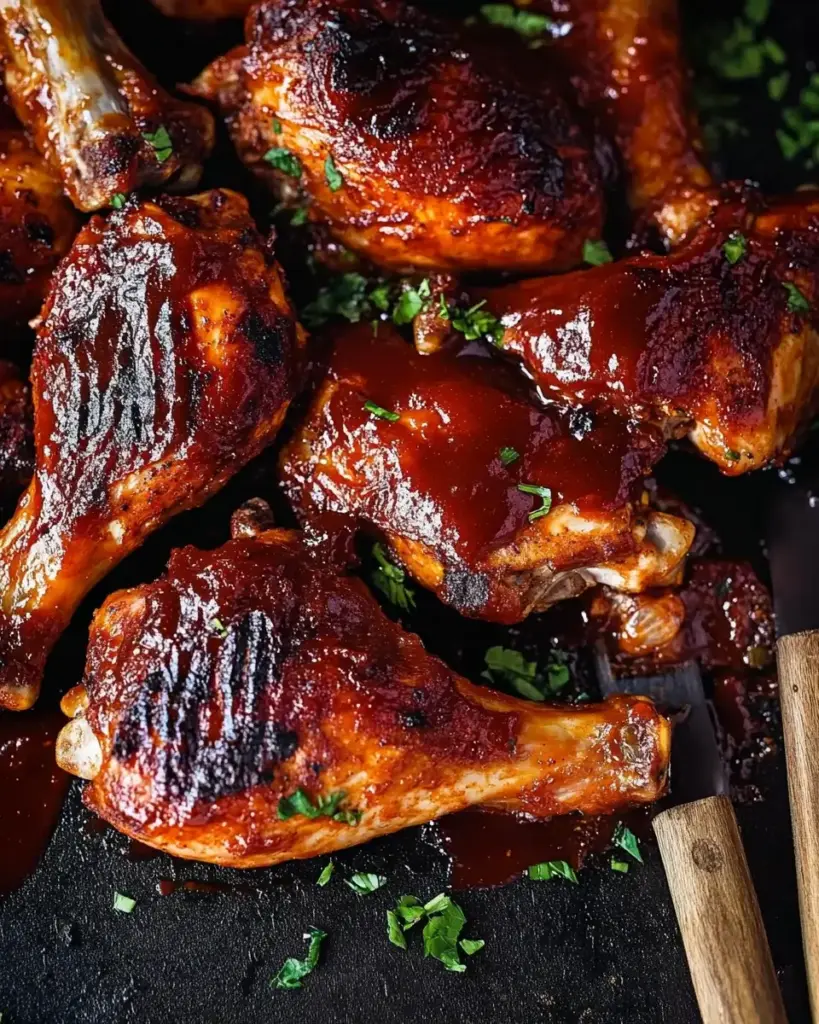
Tips for Perfecting Your Baked BBQ Chicken Recipe
Perfecting your baked BBQ chicken recipe is all about attention to detail and a few helpful tips. With these suggestions, you can elevate your dish to new heights, ensuring that every bite is juicy, flavorful, and satisfying. Let’s explore some essential tips that will help you master this delicious recipe!
First, consider the marinating time. While 15 minutes is sufficient, marinating the chicken for a few hours or overnight can significantly enhance the flavor. The longer the chicken sits in the marinade, the more it absorbs those delicious spices and seasonings. If you have the time, this extra step is well worth it!
Next, pay attention to the temperature of your oven. An oven thermometer can help ensure that your oven is at the correct temperature. If your oven runs hot or cold, it can affect the cooking time and the final texture of your chicken. A consistent temperature is key to achieving that crispy skin and juicy meat.
Another important tip is to avoid overcrowding the baking sheet. Give each chicken thigh enough space to cook evenly. If the pieces are too close together, they may steam instead of bake, resulting in less crispy skin. If you have more chicken than can fit on one sheet, consider using two sheets or baking in batches.
Don’t forget to baste your chicken! Brushing on additional barbecue sauce during the last few minutes of baking adds a rich layer of flavor. This step not only enhances the taste but also gives the chicken a beautiful, glossy finish. Just be careful not to burn the sauce, as sugars can caramelize quickly.
Lastly, let your chicken rest after baking. This step is crucial for juicy chicken. Resting allows the juices to redistribute throughout the meat, making each bite tender and flavorful. Cover the chicken loosely with foil while it rests to keep it warm.
By following these tips, you’ll be well on your way to perfecting your baked BBQ chicken recipe. Enjoy the process, and don’t hesitate to experiment with flavors and techniques to make this dish your own!
Breakdown of Time for Baked BBQ Chicken Recipe
Understanding the time required for each step in the baked BBQ chicken recipe is essential for planning your meal. Knowing how long to prep and cook will help you serve a delicious dinner without any stress. Here’s a breakdown of the time involved in making this delightful dish.
Prep Time
The prep time for this baked BBQ chicken recipe is quite manageable. You’ll need about 15 minutes to gather your ingredients and prepare the chicken. This includes rinsing, drying, and marinating the chicken thighs. If you choose to make your own barbecue sauce, add an extra 5 minutes for that. Overall, you can expect to spend around 15-20 minutes on prep work.
Cooking Time
Once your chicken is prepped and marinated, it’s time to bake! The cooking time for the chicken is approximately 35-40 minutes in a preheated oven at 400°F. During this time, the chicken will cook through and develop a crispy, golden skin. Remember to check the internal temperature to ensure it reaches 165°F for safe consumption.
Total Time
When you combine the prep time and cooking time, the total time for this baked BBQ chicken recipe is about 50-60 minutes. This makes it a quick and easy option for a weeknight dinner or a weekend gathering. With just under an hour, you can have a flavorful and satisfying meal ready to serve!
Nutritional Information for Baked BBQ Chicken Recipe
Understanding the nutritional information of your meals is essential for maintaining a balanced diet. The baked BBQ chicken recipe not only satisfies your taste buds but also provides valuable nutrients. Here’s a closer look at the nutritional content of this delicious dish.
Calories
Each serving of baked BBQ chicken contains approximately 350 calories. This makes it a hearty yet manageable option for dinner. The calorie count comes primarily from the chicken and the barbecue sauce, which adds flavor and sweetness. If you’re watching your calorie intake, consider pairing the chicken with lighter side dishes to keep your meal balanced.
Protein Content
One of the standout features of this baked BBQ chicken recipe is its protein content. Each serving provides about 28 grams of protein. This is excellent for muscle repair and growth, making it a great choice for active individuals or anyone looking to maintain a healthy diet. The chicken thighs are particularly rich in protein, ensuring that you feel satisfied and full after your meal.
Sodium Levels
When it comes to sodium, each serving contains around 600 milligrams. This level is typical for many barbecue sauces, which can be high in sodium. If you’re concerned about sodium intake, consider using low-sodium barbecue sauce or making your own to control the salt content. Balancing your meal with fresh vegetables can also help offset sodium levels.
In summary, the baked BBQ chicken recipe is not only delicious but also provides a good source of protein while being mindful of calories. By understanding the nutritional information, you can enjoy this dish as part of a healthy and balanced diet.
FAQs about Baked BBQ Chicken Recipe
Can I use skinless chicken for this recipe?
Yes, you can use skinless chicken for this baked BBQ chicken recipe. However, keep in mind that skin-on chicken thighs tend to be juicier and more flavorful due to the fat under the skin. If you choose skinless chicken, consider marinating it longer to enhance the flavor. You may also want to adjust the cooking time, as skinless chicken may cook a bit faster. Just ensure the internal temperature reaches 165°F for safe consumption.
How long should I bake the chicken?
The chicken should be baked for about 35-40 minutes at 400°F. This timing allows the chicken to cook through while developing a crispy skin. To ensure it’s perfectly cooked, use a meat thermometer to check that the internal temperature reaches 165°F. If you’re using larger pieces or a different cut of chicken, you may need to adjust the cooking time accordingly.
What can I substitute for BBQ sauce?
If you don’t have barbecue sauce on hand or prefer a different flavor, there are several tasty substitutes you can use. Some options include:
- Honey Mustard Sauce: A mix of honey and mustard creates a sweet and tangy alternative.
- Teriyaki Sauce: This adds a sweet and savory flavor that pairs well with chicken.
- Buffalo Sauce: For a spicy kick, buffalo sauce is a great choice.
- Homemade BBQ Sauce: You can easily make your own by combining ketchup, vinegar, brown sugar, and spices.
Feel free to get creative and mix different sauces to find your perfect flavor combination!
Can I make this recipe ahead of time?
Absolutely! You can prepare the baked BBQ chicken ahead of time. To do this, marinate the chicken and store it in the refrigerator for up to 24 hours before baking. This allows the flavors to develop even more. When you’re ready to cook, simply follow the baking instructions. If you have leftovers, they can be stored in an airtight container in the refrigerator for up to 3 days. Reheat in the oven or microwave before serving for a quick meal!
Conclusion on Baked BBQ Chicken Recipe
In conclusion, the baked BBQ chicken recipe is a delightful dish that brings together flavor, ease of preparation, and the joy of sharing a meal with loved ones. With its juicy chicken thighs coated in a rich barbecue sauce, this recipe is sure to become a staple in your kitchen. Whether you’re cooking for a busy weeknight dinner or a weekend gathering, this dish is versatile enough to suit any occasion.
By following the steps outlined in this article, you can create a mouthwatering meal that will impress your family and friends. Remember to experiment with different sauces and cooking methods to find the perfect combination that suits your taste. The beauty of this recipe lies in its adaptability, allowing you to make it your own.
As you enjoy your baked BBQ chicken, take a moment to appreciate the memories created around the dinner table. Food has a unique way of bringing people together, and this dish is no exception. So, gather your loved ones, serve up some delicious baked BBQ chicken, and savor the moments spent together.
Happy cooking, and may your kitchen always be filled with the wonderful aroma of baked BBQ chicken!
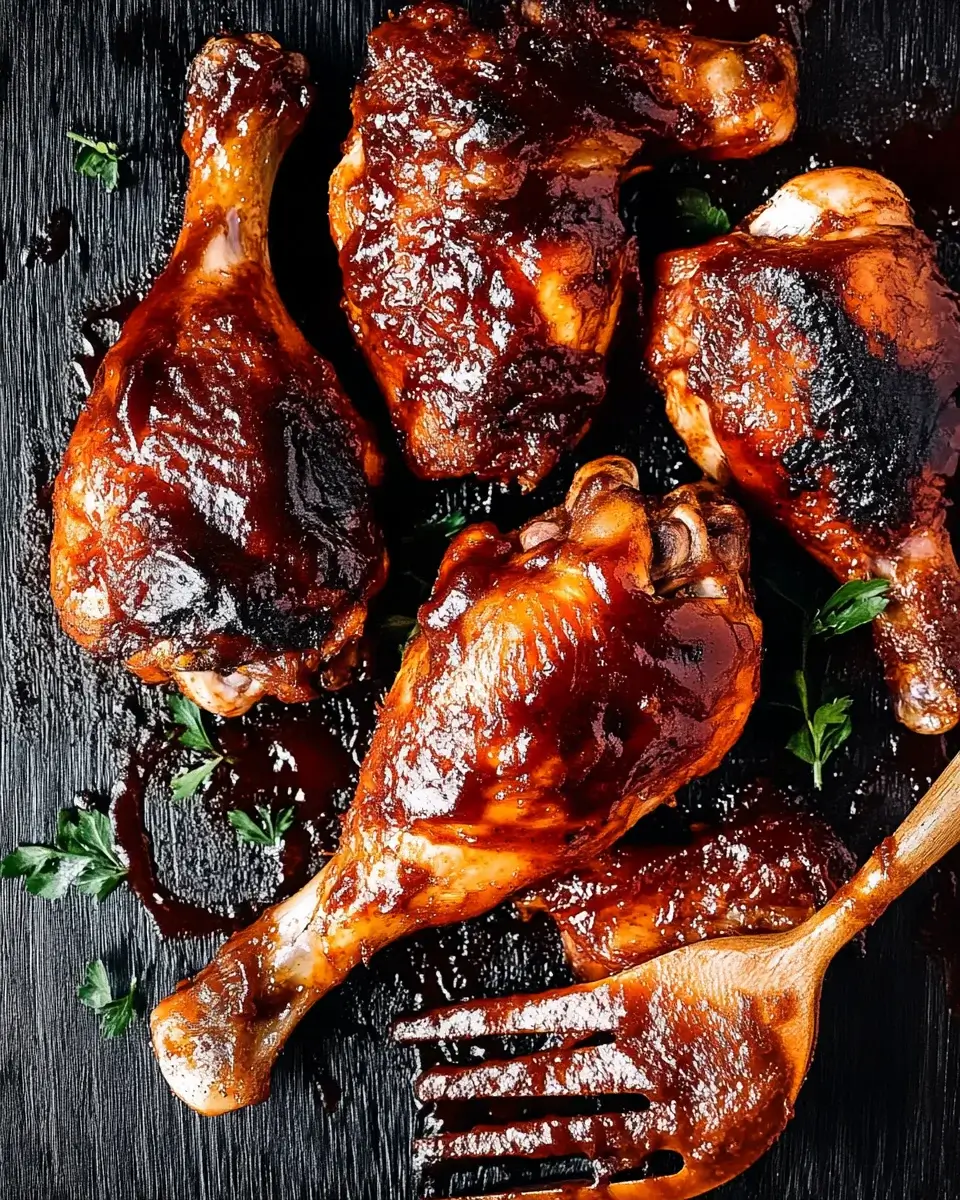
Baked BBQ Chicken Recipe: A Family Favorite Dish
Ingredients
Method
- For bone-in drumsticks:Preheat oven to 400°F (200°C).Place drumsticks on a baking sheet and season with salt, pepper, and optional spices.Bake for 15 minutes, then flip and bake for an additional 10 minutes.Flip again, brush chicken generously with barbecue sauce, and broil on high for 2 to 4 minutes until the sauce caramelizes.
- For bone-in thighs or breasts:Preheat oven to 400°F.Season and bake for 15 minutes.Flip and bake for another 20 minutes.Flip again, brush with barbecue sauce, and broil on high for 2 to 4 minutes.
- For boneless skinless breasts:Preheat oven to 400°F.Bake seasoned chicken for 10 minutes.Flip and bake for another 10 minutes.Brush with barbecue sauce and broil for 2 to 3 minutes until sticky and golden.
Notes
Use foil-lined pans for easier cleanup.
Keep a close eye while broiling to avoid burning the sauce.
Pair with coleslaw, cornbread, or roasted veggies for a full meal.



